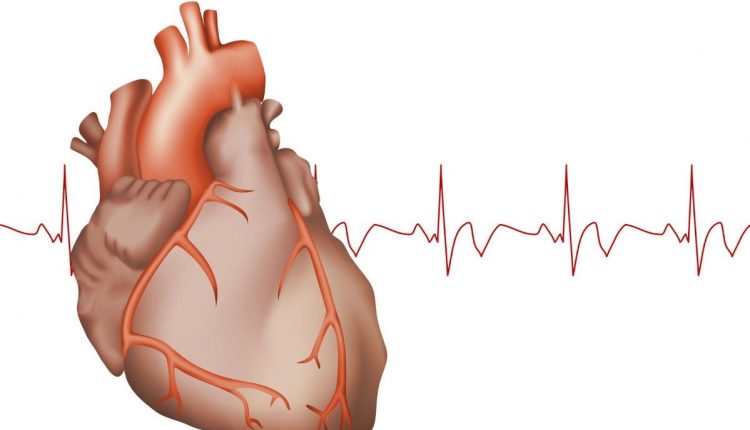
What are the risks of WPW (Wolff-Parkinson-White) syndrome
Wolff-Parkinson-White (WPW) syndrome is a congenital heart condition affecting the cardiac electrical conduction system, dependent on a defect present in the individual as early as birth
How WPW syndrome manifests itself
WPW syndrome depends on a congenital malformation, affecting the electrical conduction system of the heart.
The impulse to cardiac contraction originates from an electrical control unit, the atrial sinus node, and then spreads to the entire heart muscle through a sophisticated electrical transmission system.
This implant, in WPW syndrome, has a defect: there is the presence of a double electrical wire where there should be only one; these electrical wires, in addition, can short-circuit with the normal wires and give rise to very violent and sudden arrhythmias.
However, these arrhythmias are not caused, as in people without the condition, by stress or fatigue, but by a true internal electrical blackout in the heart.
How many people does WPW syndrome affect?
WPW pathology has an estimated incidence of around 0.3-0.4% in the entire world population, and within this percentage, in 1 in 1,000 cases, it can also result in sudden death.
In the vast majority of cases, arrhythmias are very violent but tolerated.
VISIT THE DMC DINAS MEDICAL CONSULTANTS BOOTH AT EMERGENCY EXPO
The patient is able to get help and access appropriate care; in 1 in 1,000 individuals, however, the onset is death.
This population incidence is actually a controversial figure.
It is not so easy to document this problem in the population: these are the most up-to-date data we have available; for a certain figure, one would need to map the population at large with an electrocardiogram.
Diagnosis of WPW pathology
WPW syndrome can be identified with a simple electrocardiogram.
The malformation in the electrical system of the heart can be seen very clearly.
It routinely happens, therefore, that people arrive at the diagnosis because of an occasional finding, or because the patient, in the presence of a first tachycardia, goes to a specialist.
Caution for those who play sports
Despite this ease of diagnosis, it is a particularly delicate problem and is even more so in those who play sports.
The heart subjected to stress and adrenaline in sports settings, in the presence of this defect, may have arrhythmias that are extremely more severe than the general population.
This is the reason why sports medicine mandates the performance of an electrocardiogram.
It is necessary to be certain that this problem is not present, and if it is found, extensive cardiological investigations are inevitably required to study the dangerousness of this abnormality.
How the dangerousness of WPW pathology is established
Once the abnormality has been found on the electrocardiogram, the question remains: can it be harmless in an asymptomatic person, or can it be dangerous even if it has given no symptoms so far?
One must, therefore, decide whether to eliminate it with an operation or tell the patient that he or she can live with it safely.
The examinations that are done are able to establish the riskiness of this facility by defining its pro-arrhythmic characteristics.
The main examination to establish the level of dangerousness of the condition is the electrophysiological study.
It is done in an inpatient setting and consists of the introduction of some electrical microprobes, the electro catheters, into a vein of the body, usually the femoral vein, under local anesthesia.
It is not a particularly invasive investigation, nor is it dangerous: through these probes we can study all those electrical features of the structure, defining its dangerousness and then indicating to the patient whether it is appropriate to eliminate this double wire or whether he can live with it safely.
How to treat WPW syndrome
There are 2 main approaches to treating WPW syndrome:
- surgical, with ablative treatment;
- pharmacological.
The Surgical approach: the ablative cure
In most cases, the approach to this condition must be surgical.
The elimination of this electrical wire was once done through an extremely invasive cardio-surgical approach: it involved doing thoracotomy surgery, thus with all the problems associated with a long course.
Today, however, through the same route that is used to study the problem, a microprobe with electrothermal capabilities capable of inducing micro-thoracotomy cautery is introduced.
The wire is literally electrocoagulated by losing the ability to conduct the pulse, thus making the abnormality disappear from the conventional electrocardiogram.
This is a technique that has been used for years and has a success rate of 95 to 99%, a very high rate, with 2 days of hospitalization and 6 to 10 hours of bed rest.
Once treated, the heart is cured.
So, the patient runs more risks in not treating this syndrome, running into the possibility that he or she may develop arrhythmias, the severity of which cannot be defined without performing more thorough investigations.
The pharmacological approach
There are pharmacological treatments for the treatment of WPW disease.
However, these are treatments that are unable to induce a stable recovery of the patient.
They are drugs that must be taken daily for long periods.
On these grounds, therefore, at the level of international guidelines, ablative care intervention is to be considered class one as a therapeutic recommendation compared to drug therapy.
Read Also:
Emergency Live Even More…Live: Download The New Free App Of Your Newspaper For IOS And Android
Inflammations Of The Heart: Myocarditis, Infective Endocarditis And Pericarditis
Quickly Finding – And Treating – The Cause Of A Stroke May Prevent More: New Guidelines
Atrial Fibrillation: Symptoms To Watch Out For
Wolff-Parkinson-White Syndrome: What It Is And How To Treat It
Do You Have Episodes Of Sudden Tachycardia? You May Suffer From Wolff-Parkinson-White Syndrome (WPW)
Wolff-Parkinson-White Syndrome: Pathophysiology, Diagnosis And Treatment Of This Heart Disease



